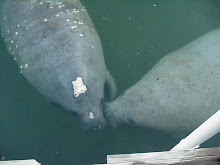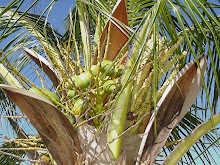 What do making dinner and a Guinea Pig named Pansy have in common?
What do making dinner and a Guinea Pig named Pansy have in common?Smell.
I was rinsing off some celery stalks so Spud could chop them up for me before I added them to the dish I was making for dinner and as I held them over the sink and rinsed, the smell of the celery wafted up into my nostrils and with lightening speed, into my brain's Limbic System (the part of the brain related to smell and memories) and I immediately thought of Pansy. I have not thought of her in eons. To be honest, I had forgotten Pansy had ever crossed my life's path until the celery smell brought her crashing back to the forefront of my conscious mind.
(Dear family members, pardon me if I mis-remember the events, dates and times of Pansy's stay with us.)
Pansy came into my life, as well as those of my family members, through my little brother Michael. Michael's second-grade teacher asked if he would take Pansy, the school year was ending and Pansy needed a home.
Pansy was your average Guinea Pig, just under 2-3 pounds and 8-10 inches long. She was black and white and I imagine she resembled her ancestors who hailed from the Andes. Guinea Pigs have been domesticated in South America for hundreds of years. They were and are raised for food there (I wonder if they taste like chicken? Awww come on, you were thinking it too). 16th century European traders helped Guinea Pigs become the pets we know and love today. Queen Elizabeth the first had a pet Guinea Pig.
Pansy was sweet. I remember her distinctive whistle. She whistled over just about anything. She loved lettuce, carrots and celery (this is where the smell-memory enters the picture) but she particularly enjoyed eating the grass when we would let her outside. We would take her cage, remove the bottom, place her in the grass and put the bottom-less cage over her. When she finished the grass in that spot we would move her to a new one.
Pansy was part of our family for maybe about a year.
Of all the senses, smell is the strongest associated with memory. My sense of smell is particularly strong/sensitive (just ask anyone in my family). Does this trait make my memories stronger, more vivid? I don't know. I have never experienced someone else's smell-induced memories. I liken the question to one I have asked Yam and Spud in the past..."Am I a good Mom?", to which Yam answered, "I don't know, you're the only one I've ever had." Cheeky little monkey.
I have cooked with celery many times since knowing Pansy, I don't know why this time it triggered my memory of her, I just know it made me smile.







 Everyone (those who ate) had to go through the food line to get their breakfast of fried eggs, bacon, sausage, grits and a biscuit, muffin or croissant. There were also coffee, tea, juice or milk to drink. Going through the line brought back memories of my school days (and Adam Sandler's "Lunch Lady Land" song).
Everyone (those who ate) had to go through the food line to get their breakfast of fried eggs, bacon, sausage, grits and a biscuit, muffin or croissant. There were also coffee, tea, juice or milk to drink. Going through the line brought back memories of my school days (and Adam Sandler's "Lunch Lady Land" song).


 In keeping with the breakfast's theme of "Finding the Common Ground", Dr. Bradshaw spoke of education being the foundation for finding or achieving the common ground between all people. You would expect that from a university president wouldn't you? I do agree with Dr. Bradshaw though.
In keeping with the breakfast's theme of "Finding the Common Ground", Dr. Bradshaw spoke of education being the foundation for finding or achieving the common ground between all people. You would expect that from a university president wouldn't you? I do agree with Dr. Bradshaw though.


 Trabue Avenue is located in the historic district of town and is a bricked avenue. The bricks still bear the fingerprint marks where the laborers grabbed them from their molds while still wet nearly a century ago.
Trabue Avenue is located in the historic district of town and is a bricked avenue. The bricks still bear the fingerprint marks where the laborers grabbed them from their molds while still wet nearly a century ago. Since then, 14 blocks of brick streets have been torn out and replaced. The last time was 8 years ago until Saturday, January the 8th.
Since then, 14 blocks of brick streets have been torn out and replaced. The last time was 8 years ago until Saturday, January the 8th. I handled a couple dozen bricks between my camera shots. Soon the street's workspace became too crowded with volunteers, so I stepped away and concentrated on my picture taking. The Colonel continued working.
I handled a couple dozen bricks between my camera shots. Soon the street's workspace became too crowded with volunteers, so I stepped away and concentrated on my picture taking. The Colonel continued working.
 Volunteer workers knelt upon the bricks that they had already laid as they placed the next row onto the sandy base of Trabue Avenue. After a couple of rows had been added to the avenue a landscape timber would be placed against the bricks and a man with a sledge hammer would hit the timber to knock the bricks into a straighter and tighter pattern.
Volunteer workers knelt upon the bricks that they had already laid as they placed the next row onto the sandy base of Trabue Avenue. After a couple of rows had been added to the avenue a landscape timber would be placed against the bricks and a man with a sledge hammer would hit the timber to knock the bricks into a straighter and tighter pattern.
 There were other volunteer workers who were sweeping sand into the cracks between the bricks.
There were other volunteer workers who were sweeping sand into the cracks between the bricks. While The Colonel and I were there helping, about 40 feet of bricks were laid with plenty more to go.
While The Colonel and I were there helping, about 40 feet of bricks were laid with plenty more to go. A couple of ladies who lived on Trabue Avenue set up an awning in their driveway and had fruit, pastries, orange juice and water available for the volunteers. They were also going to have hot dogs for everyone when lunchtime rolled around (The Colonel and I left before lunchtime).
A couple of ladies who lived on Trabue Avenue set up an awning in their driveway and had fruit, pastries, orange juice and water available for the volunteers. They were also going to have hot dogs for everyone when lunchtime rolled around (The Colonel and I left before lunchtime). and I continued taking more pictures. I took a picture of this pretty house on Trabue Avenue.
and I continued taking more pictures. I took a picture of this pretty house on Trabue Avenue.
 The elderly couple who owned the house were watching the brick laying volunteers from the sidewalk and came up to me as I was standing there photographing their house. We started talking and they told me that their house was one of the original railroad workers' cottages from the late 1800's. There were two others still on Trabue Avenue. They invited me in to take a tour of the little house. It was small but quaint. They told me that I could come back for a visit and coffee any time.
The elderly couple who owned the house were watching the brick laying volunteers from the sidewalk and came up to me as I was standing there photographing their house. We started talking and they told me that their house was one of the original railroad workers' cottages from the late 1800's. There were two others still on Trabue Avenue. They invited me in to take a tour of the little house. It was small but quaint. They told me that I could come back for a visit and coffee any time.



 The day was very cold and the men were wearing heavy coats over their weapons. Major Dade and an advance guard were slightly ahead of the main column and the soldiers had no scouts out on their flanks.
The day was very cold and the men were wearing heavy coats over their weapons. Major Dade and an advance guard were slightly ahead of the main column and the soldiers had no scouts out on their flanks.
 With the break in the fighting, the soldiers took advantage of the time by felling trees and building a triangular breastwork of logs. It was only about three logs high when the Seminoles began their attack again.
With the break in the fighting, the soldiers took advantage of the time by felling trees and building a triangular breastwork of logs. It was only about three logs high when the Seminoles began their attack again.
 Archaeologists later found piles of flattened rifle balls at the site of the log breastworks on the grounds of the Dade Battlefield Historic State Park in Bushnell, Florida.
Archaeologists later found piles of flattened rifle balls at the site of the log breastworks on the grounds of the Dade Battlefield Historic State Park in Bushnell, Florida.

 When the smoke cleared, virtually all the soldiers were dead. Dade, his officers and 103 soldiers were killed.
When the smoke cleared, virtually all the soldiers were dead. Dade, his officers and 103 soldiers were killed.

 Four soldiers, all badly wounded, survived the attack. Two of the survivors made their way back to Fort Brooke and arrived to tell of the battle and another reached the fort before dying. The last survivor was killed by Indians before he made it to Ft. Brooke. Dade's interpreter, Louis Pacheco was either captured by or voluntarily left with the Seminoles.
Four soldiers, all badly wounded, survived the attack. Two of the survivors made their way back to Fort Brooke and arrived to tell of the battle and another reached the fort before dying. The last survivor was killed by Indians before he made it to Ft. Brooke. Dade's interpreter, Louis Pacheco was either captured by or voluntarily left with the Seminoles.
 We also saw the descendants of Black Seminoles.
We also saw the descendants of Black Seminoles.




































